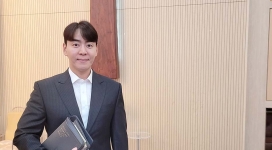Archaeologists said they have found a cave where John the Baptist baptized many of his followers on Monday, August 16, 2004. While scholars still question the validity of the claim, the archaeologists on site explained that the tens of thousands of shards from small ritual jugs, a stone used for foot cleansing and wall carvings support their theory.
"John the Baptist, who was just a figure from the Gospels, now comes to life," British archaeologist Shimon Gibson during an exclusive tour of the cave given to The Associated Press.
The cave, located on the land of Kibbutz Tzuba, was carved by Israelites in the Iron Age, between 800 and 500 BC, according to the AP. Gibson was introduced by this cave, which had filled with mud and sediment over the years, by his fried Reuven Kalifon, an immigrant from Cleveland, Ohio.
Reuven, who was a Hebrew teacher in the area, would take his students to explore the cave. Five years ago, Kalifon invited Gibson to the cave, asking him to take a closer look. During that trip, Gibson, who “excavated in the Holy Land for more than 30 years,” found a crude carving of a head, thus leading to a full-fledged excavation.
The Associated Press reported that over the next five years, “the explorers laid bare 28 steps leading to the bottom of the cave. On the right, a niche was carved into the wall -- typical of those used in Jewish ritual baths for discarding the clothes before immersion. Near the end of the stairs, the team uncovered an oval stone with a foot-shaped indentation -- about a shoesize 45 (U.S. size 11). Just above, a soapdish-like niche was carved into the stone, apparently for ritual oil that would flow through a small channel onto the believer's right foot.
“On the water-covered floor of the cave, stones and boulders had been moved aside by the worshippers and a middle path had been filled with gravel, apparently to protect those wading from stubbing their toes,” the AP said.
Another carving found during the excavation is a drawing of a man with an “unruly head of hear” who “wears a tunic with dots.”
James Tabor, a Biblical scholar from the University of North Carolina said this figure is most likely that of John the Baptist himself, because John was a member of the Nazarites – a sect whose followers grew out their hair and wore garment woven of camel’s hair.
Gibson said the finds, taken together with the proximity of John's hometown, constituted strong evidence that the cave was used by John himself.
"All these elements are coming together and fill in the picture of the life and times of John the Baptist," said Gibson.
Gibson’s find has had several critics, one of whom is Steven Ortiz, director of the Center for Archaeological Research at New Orleans Baptist Theological Seminary.
“It is extremely improbable that this site is where John baptized many of his followers,” Ortiz said. “All the Gospel accounts place his ministry in the Jordan Valley.
“The more likely site is somewhere in the Judean wilderness alongside the Jordan River. The recently discovered site is probably a later Byzantine pilgrimage site commemorating his family birthplace,” Ortiz said.
Stephen Pfann, a Bible scholar and president of the University of the Holy Land in Jerusalem, was not as critical of Gibson’s find, but added that the exploration must continue.
"It is inviting more scholars to come in and give alternative explanations, if they can," said Pfann.
Meanwhile, Tabor, who also worked on the excavation with Gibson, said while no one could say for certain that John the Baptist used the cave, the discovery was nonetheless a milestone to biblical archaeology.
"We actually have a geographical location near Ein Kerem now at which water purification rites were conducted that go back to the first century and connects them to the traditions of John the Baptist," said Tabor.
Gibon said he will release a new book about the dig, entitled “The Cave of John the Baptist,” later on this week.







